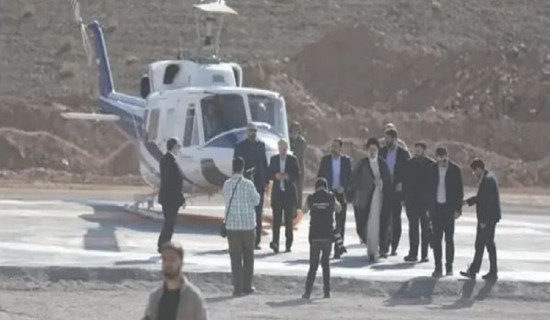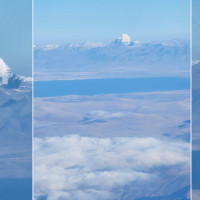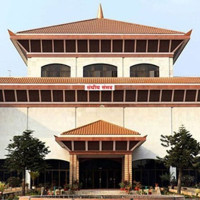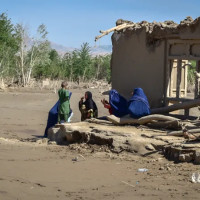- Monday, 20 May 2024
Breakthrough made in tunnel of Sunkoshi-Marin diversion
By A Staff Reporter,Kathmandu, May 9: A breakthrough has been made in the tunnel-digging work in Sunkoshi-Marin Diversion Multipurpose Project.
Prime Minister Pushpa Kamal Dahal ‘Prachanda’ made the breakthrough in the tunnel of the national pride project by pressing a switch of Tunnel Boring Machine (TBM) amidst a function at the project site on Wednesday.
The breakthrough of the tunnel has been achieved in 19 months since the start of digging of the tunnel, according to the project. The works of digging the tunnel had started on October 14, 2022.
The cost of the project was initially Rs. 46 billion, but in the latest update, it has reached Rs. 49 billion, according to the project.
The water of the Sunkoshi River will be carried to the Marin River from the border of Sindhuli and Ramechhap districts through the 13.3-km-long tunnel before mixing it into the Bagmati River.
The water will later be distributed to the farmers through the Bagmati Irrigation Project.
The main objective of the project is to manage irrigation facilities throughout the year in 122,000 hectares of farmland in Dhanusha, Mahottari, Sarlahi, Rautahat and Bara districts.
Addressing the function, Prime Minister Prachanda said that the project would contribute qualitatively to the national economy after its implementation.
Prachanda expressed his belief that after the completion of the project, the irrigation system would be improved and agricultural production would increase in the project area.
"This project located in Sindhuli District of Bagmati Province will provide year-round irrigation facilities to the fertile land of five districts of Madhes Province, making a qualitative contribution to the national economy and hydropower generation. Today, the 'breakthrough' of the tunnel has taken place, and the remaining work of this project will also be completed within the deadline,” he said.
Stating that the Sunkoshi-Marin Diversion Multi-Purpose Project was a transformative project of national pride, Prime Minister Prachanda said that the completion of the project would contribute significantly to the goal of increasing productivity and prosperity.
He said, "When the breakthrough of the tunnel was achieved, we all got new energy and motivation. It has added enthusiasm to the construction of large infrastructure.”
Noting that the agricultural sector was the backbone of Nepal's economic development and contributed about one-third to the gross domestic product, Prime Minister Prachanda said that increasing agricultural production and productivity was necessary for the country to be self-sufficient in food supply, to ensure food security, to reduce poverty and to uplift the living standard and prosperity of the people.
Stating that 60 per cent of Nepal's arable land lay within the Terai Madhes and Inner Madhes, the Prime Minister said that the irrigation projects being developed and operated in the Terai-Madhes region were based on the river flow system.
Stating that the water of the glaciers should be used for agricultural production, he said that the same water source would be used for hydropower generation, drinking water and other purposes for the overall development of the nation.
Prime Minister Prachanda instructed to complete the project on time as the goals of good governance, social justice and prosperity in Nepal would be achieved only through the successful construction of large infrastructures.
He urged for coordination and cooperation from respective places in the task of effectively completing the transformational national pride project of the country.
Stating that through the successful implementation of this project, the technical skills of the technicians working in water resources and irrigation sector had been achieved, Prime Minister Prachanda said that by using the water resources in a integrated manner, agricultural production and productivity from fertile land would be increased that would help balance excess import.
With the implementation of the project, the population living in Sunkoshi and Tamakoshi areas would diversify, he said and added that there would be a significant increase in internal and external tourism from fish farming in the area, and tourism business would flourish in the reservoir.
On the occasion, Minister for Energy, Water Resources and Irrigation Shakti Bahadur Basnet said that this project had added a new dimension in the field of infrastructure development in the country.
Ambassador of United States of America to Nepal Dean R. Thompson and Ambassador of China to Nepal Chen Song and officials of the government of Nepal attended in the programme.
















